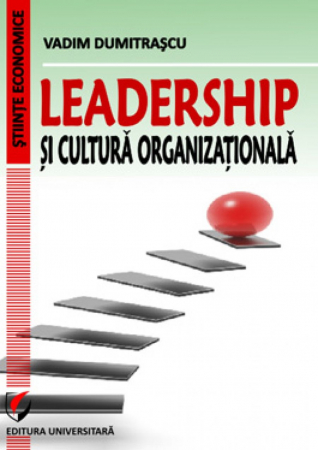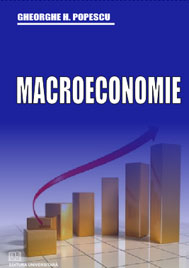6359.png) Automatic data classification techniques. The use of neural networks in establishing the country rating
Automatic data classification techniques. The use of neural networks in establishing the country rating
ISBN: 978-606-28-1435-9
DOI: https://doi.org/10.5682/9786062814359
Publisher year: 2022
Edition: I
Pages: 156
Publisher: Editura Universitara
Author: Ana Maria Mihaela Iordache
- Download (1)
- Authors
- Content
- More details
- Where to find it
- Reviews (0)
-
Automatic data classification techniques. The use of neural networks in establishing the country rating
Download
Chapter 1. General aspects of data mining and modeling based on neural networks / 11
1.1 History and definition of the term data mining / 11
1.2 Data mining methods and techniques / 14
1.3 Definition and general form of a neural network / 20
1.4 Algorithms for training neural networks / 23
1.5 Networks. Forgetting factor / 29
Chapter 2. The problem of classifying objects in approaching the country rating / 30
2.1 The current state of research on the problem of object classification / 30
2.2 Neural network in classification / 31
2.3 Multilayer perceptron network training algorithm / 33
2.4 Multilayer perceptron training algorithm with a hidden layer of neurons / 36
2.5 Country rating calculation methods used by various rating agencies / 39
Chapter 3 Classification of European Union countries according to economic, social and financial indicators in terms of data analysis / 47
3.1 Defining the problem and the methodology for classifying countries / 47
3.2 Classification of countries according to different groups of indicators / 49
3.2.1 Economic indicators / 49
3.2.2 Social indicators / 57
3.2.3 Financial indicators / 64
Chapter 4. Classification of countries through the neural network / 70
4.1 Establishing (choosing) indicators for the neural network / 70
4.2 Associating a neural network with the problem of classifying countries / 74
4.3 Conclusions related to the result of modeling with the help of the neural network / 97
4.4 Recommendations for future research (genetic algorithms) / 100
Conclusions / 105
Annexes / 113
In this context, data mining, also known as "knowledge discovery in large databases" is a modern and powerful tool of information and communication technology, a tool that can be used to extract useful but still unknown information.
This automates the process of discovering relationships and combinations in raw data, and the results found could be framed in an automated decision support system.
Any human activity, both at the microeconomic level and at the macroeconomic level, is carried out in conditions of risk and uncertainty. Some of these can be avoided more or less easily depending on the level of knowledge, the degree of evaluation or the importance given to them in substantiating the decisions.
The main objectives of the research were: the most exhaustive presentation of automatic data classification techniques based on neural networks and the development of a methodology for evaluating the country rating according to several indicators chosen from various groups: economic indicators, indicators financial and social indicators. The proposed classification model is applicable both at the macroeconomic level and at the microeconomic level.
At the microeconomic level, in the context of globalization, the conduct of business by economic agents in foreign markets will be achieved only if there is a strong enough incentive, able to motivate companies to assume the risks involved in operating in a given country. The country rating calculated by various institutions is a very important aggregate indicator when considering whether or not to invest in that area.
At the macroeconomic level, country risk analysis involves identifying the difficulties that may arise in meeting a particular state's obligations arising from its external commitments.
The doctoral dissertation consists of five chapters. In the first chapter entitled "Overview of data mining and modeling based on neural networks" we presented a history and a definition of the term data mining, a brief summary of data mining methods and techniques, focusing on modeling based on neural networks.
The development of computers and implicitly of computing power as well as the large volume of data have led to the need to discover new information in a relatively short time. In this context, starting with the 2000s, a new technology called data mining was developed. Data mining methods come from statistics, database management and artificial intelligence (neural networks, data analysis, image processing, computer-assisted learning, genetic algorithms, etc.). Among the most common data mining techniques are: exclusion, classification (clustering), discrimination and prediction.
Neural networks are used to solve problems that cannot be solved with the help of conventional algorithms, such as optimization problems, classification problems, etc. A neural network is made up of neurons, grouped in layers, each neuron in a certain layer being connected to all the neurons in the previous layer and to all the neurons in the next layer, except for the input and output layers. The most important and most commonly used algorithm for driving a neural network is the back ‑ propagation algorithm.
In the second chapter of the paper entitled "The problem of object classification in the approach to country rating" we reviewed the current state of research in the field of object classification and studied the neural network in the classification problem.
Neural networks are flexible, can easily adapt to training data, and can better manage "noise" and changes in learning examples. Once the training process is completed, a neural network can generate a reasonable output for input data that has not been presented to it in the learning phase.
In the field of object classification, the most used model is the multilayer perceptron. This model assumes the existence of a fully connected neural network, with neurons arranged in several layers as follows: input layer, one or more hidden layers and an output layer. Among the advantages of the multilayer perceptron are: efficiency in remembrance and high efficiency in classification. The long training time of this type of neural network somewhat limits the application of the model. Next, we briefly presented the methodology used by various agencies to evaluate the country rating and the way of awarding the grade for a certain state.
Starting from the definition that risk represents the variability of the possible outcome depending on an uncertain, uncertain event, there are several rating agencies, each with its own risk assessment model and offering various products for different user segments. Thus, the main existing rating agencies are: Institutional Investor, Standard & Poor's, Political Risk Services, The Economist, Moody's and others.
When making the application we used the following methodology: choosing the group of countries on which the application is made (European Union countries: Austria, Denmark, Sweden, Finland, Germany, Cyprus, Latvia, Poland, Lithuania, Netherlands, Spain, Portugal, France, Italy , Romania, Greece, Great Britain, Bulgaria, Belgium, Hungary, Malta, Slovakia, Czech Republic, Estonia, Slovenia, Luxembourg, Ireland); establishing indicators, recording their values (for 2009) and applying data analysis techniques (main component analysis, cluster analysis and factor analysis) on each group of indicators; extracting the indicators that bring maximum informational input from each group; development and training of the neural network; interpreting the obtained results and making predictions (simulations) on the situation in Romania.
The third part of the paper presents the applicability of data mining techniques, more precisely the extraction of "hidden", "important" information from the lists of indicators of countries registered in different plans (economic, social and financial) using data analysis techniques (component analysis main, factor analysis and cluster analysis).
The sets of indicators used in the application are the following:
- Economic indicators: final consumption (% of GDP), domestic demand (% of GDP), final consumption of households (% of GDP), gross capital formation (% of GDP), gross fixed capital formation (% of GDP) , exports (% of GDP), imports (% of GDP), gross value added (current prices) (% of GDP), taxes without subsidies on product (% of GDP), wages (% of GDP), gross capital formation fixed by the private sector (% of GDP);
- Social indicators: share of employees with partial employment contract in total employees, share of population employed in total population, share of population aged 0‑14 years in total population, share of population aged 15‑24 years in total population, share of elderly population 25‑49 years in total population, share of population aged 50‑64 in total population, share of population aged 65‑79 in total population, share of population over 80 years in total population, unemployment rate, average age of population;
- Financial indicators: average annual inflation rate (relative to the consumer price index), public fiscal deficit (% of GDP), fixed public investment (% of GDP), public debt (government)% of GDP, current account balance (% GDP), foreign government loans (% of GDP).
For each set of indicators we applied main component analysis techniques, cluster analysis techniques and factor analysis for a first classification of countries according to the indicators in each group.
The last chapter of the paper entitled "Classification of countries through the neural network" presents the association of a neural network for the problem of classifying countries according to indicators that provide maximum information from the three groups of indicators analyzed in Chapter Four.
In order to associate a multilayer perceptron neural network with the analyzed problem, it is necessary to know first which are the indicators that bring maximum information from each analyzed group and then in which classes the countries are divided according to these indicators.
Following the application of data analysis techniques, the indicators that bring maximum informational input from each group are: domestic demand, gross capital formation, exports (in the field of real economy); the share of the employed population in the total population, the share of the population aged 15-24 in the total population, the average age of the population (socially); public fiscal deficit, fixed public investments, external government loans (from the financial field).
After training the neural network, it was found that there are countries that have changed the class in which they were initially. This was possible due to the fact that the states of the European Union were divided into three parts: training data (80% of all countries), validation data and test data.
Also in this chapter are presented certain forecasts (scenarios) for improving the economic, social and financial performance of Romania in order to access the class of developed countries. The predictions were obtained based on the scores and transfer functions through the already trained neural network.
At EU level, it is important to establish economic, social and / or financial policies in order to avoid macroeconomic imbalances and to pursue sustainable growth supported, where necessary, by the adoption of structural reforms. In order to achieve this, in recent years there has been more and more talk of a new concept called macroprudentiality. But no matter how effective the macro-prudential policies are, they cannot replace the macroeconomic, social or financial policies adopted at the level of each state.
Customer Support Monday - Friday, between 8.00 - 16.00
0745 200 718 0745 200 357 comenzi@editurauniversitara.ro
![Automatic data classification techniques. The use of neural networks in establishing the country rating [1] Automatic data classification techniques. The use of neural networks in establishing the country rating [1]](https://gomagcdn.ro/domains/editurauniversitara.ro/files/product/large/iordache-ana-maria_tehnici-de-clasare-automata-a-datelor_bt-6469-6488.jpg)














